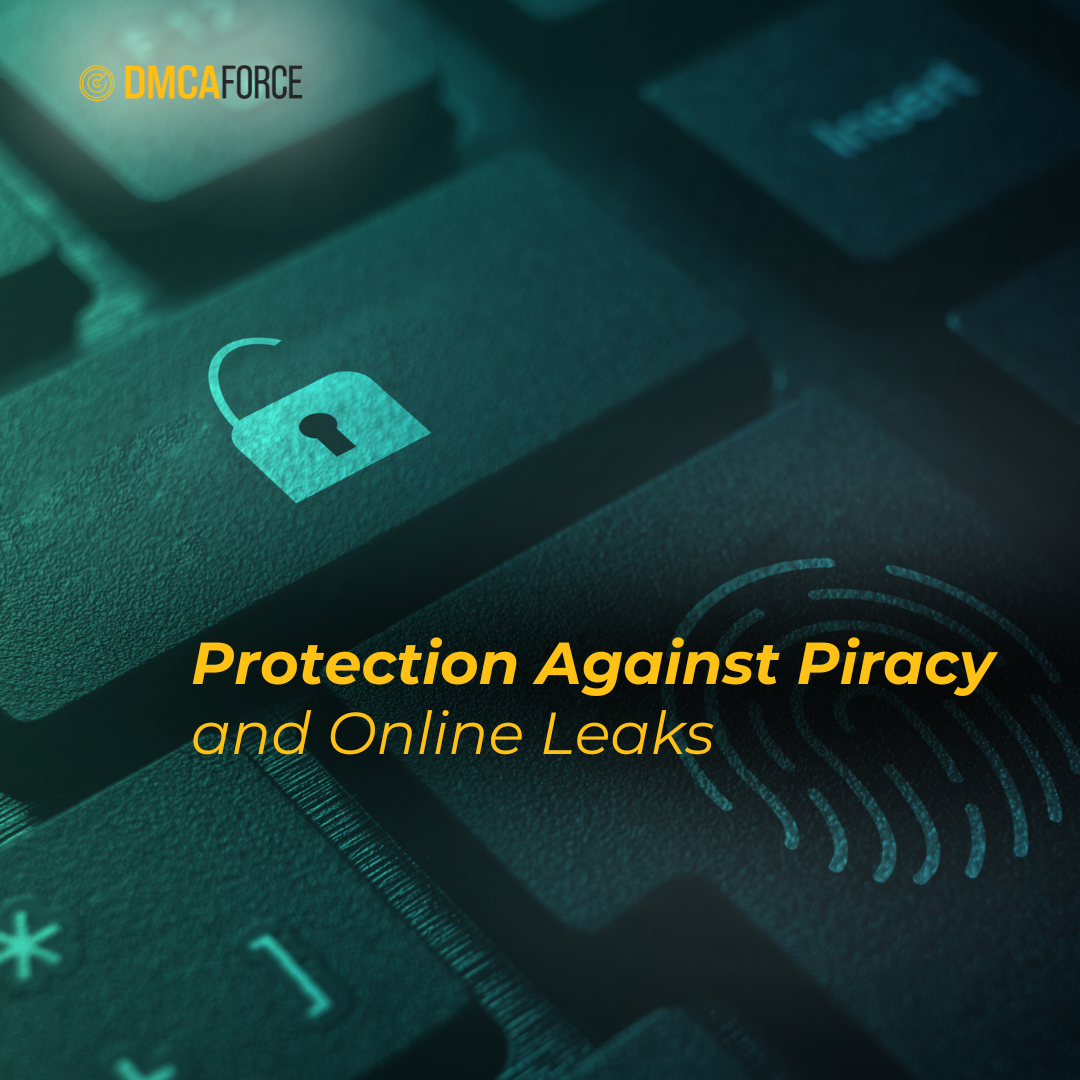News

Understanding DMCA: A Guide to Digital Content Protection
The Digital Millennium Copyright Act (DMCA) is a law in the United States that protects digital content creators from copyright infringement. It was enacted in 1998 and has since become a crucial tool for content owners to safeguard their intellectual property online. Understanding DMCA and how it can help digital content protect is key for creators.
The DMCA makes it illegal to reproduce, distribute, or display copyrighted material without permission from the copyright holder. This includes music, videos, images, software, and written works. The law also prohibits circumventing technological measures designed to prevent copyright infringement, such as encryption or digital rights management systems.
The DMCA also provides safe harbor provisions for online service providers. This means that they are not liable for copyright infringement if they follow certain procedures, such as registering with the US Copyright Office and implementing a policy for responding to takedown notices.
Content creators can use the DMCA to protect their work by registering their copyrights with the US Copyright Office and monitoring online platforms for infringing content. They can then send takedown notices to service providers hosting infringing material.
How Can DMCA Help With Digital Content Protection?
The Digital Millennium Copyright Act (DMCA) guidelines provide a framework for online service providers, copyright holders, and internet users to follow when dealing with copyrighted material online. Here are some key guidelines:
For Online Service Providers:
- Register with the US Copyright Office to designate an agent to receive DMCA notices
- Implement a policy for responding to DMCA takedown notices
- Remove infringing content within a reasonable timeframe (typically 10-14 days)
- Provide a counter-notification process for users who believe their content was removed in error
For Copyright Holders:
- Register your copyrights with the US Copyright Office
- Monitor online platforms for infringing content
- Send a valid DMCA takedown notice to the service provider hosting the infringing content
- Include required information in the notice, such as identification of the copyrighted work and location of the infringing material
For Internet Users:
- Only upload or share content that you have created or have permission to use
- Be aware of copyright laws and respect others’ intellectual property rights
- If you receive a DMCA takedown notice, respond promptly and provide evidence that you have removed the infringing content
Key Requirements for DMCA Notices:
- Identification of the copyrighted work allegedly being infringed
- Identification of the material claimed to be infringing and its location online
- Contact information for the copyright holder or their authorized agent
- A statement that the complaining party has a good faith belief that use of the material is not authorized by law
- A statement that the information in the notice is accurate and under penalty of perjury
By following these guidelines, online service providers, copyright holders, and internet users can work together to protect intellectual property rights and promote responsible behavior online.
What happens if you don’t comply with DMCA?
For Online Service Providers:
- Liability for copyright infringement: If a service provider fails to remove infringing content after receiving a valid DMCA notice, they may be held liable for copyright infringement.
- Legal action: Copyright holders can take legal action against service providers that fail to comply with the DMCA, seeking damages and injunctions.
- Loss of safe harbor protection: Service providers that don’t follow the DMCA’s notice and takedown procedure may lose their safe harbor protection, making them more vulnerable to lawsuits.
For Copyright Holders:
- Delayed removal of infringing content: If a copyright holder doesn’t send a valid DMCA notice or follow the proper procedure, it may take longer to get infringing content removed from online platforms.
- Limited legal recourse: If a copyright holder doesn’t comply with the DMCA, they may have limited legal options for pursuing infringement claims.
- For Internet Users:
Account suspension or termination:
- Online service providers may suspend or terminate accounts of users who repeatedly infringe on copyrights or fail to respond to DMCA notices.
- Legal action: Copyright holders can take legal action against individual users who infringe on their copyrights, seeking damages and injunctions.
- Criminal penalties: In extreme cases, criminal penalties such as fines and imprisonment may apply for willful copyright infringement.
It’s essential for online service providers, copyright holders, and internet users to understand their obligations under the DMCA and take steps to comply with its requirements. Failure to do so can result in legal consequences, financial losses, and damage to one’s reputation.
What is the DMCA in simple terms?
The DMCA, or Digital Millennium Copyright Act, is a law that helps protect creative works like music, videos, images, and writings from being copied or shared without permission. It’s like a shield that safeguards the rights of people who create original content.
Imagine you’re an artist who spends hours creating a beautiful painting. You wouldn’t want someone to take a picture of it and claim it as their own, right? That’s basically what the DMCA prevents.
Here’s how it works:
- When someone creates something original, like a song or a video, they own the rights to it.
- If someone else wants to use that content, they need to get permission from the creator.
- If someone uses the content without permission, the creator can send a notice to the website or platform where it’s being shared.
- The website then has to remove the content within a certain timeframe.
- The DMCA also protects websites and platforms from getting in trouble if they follow these rules. It’s like having a “get out of jail free” card if they accidentally host infringing content.
The law is important because it helps creators earn money from their work and stops people from stealing their ideas. It also makes sure that websites and platforms are responsible for what’s shared on their sites.
In simple terms, the DMCA is like a set of rules that helps protect creative people and their work from being stolen or used without permission. It promotes respect for intellectual property and encourages people to create more amazing things!
How does DMCA protection work?
DMCA protection works by providing a process for copyright holders to report infringement and for online service providers to respond to those reports. Here’s how it works:
Step 1: Copyright Holder Finds Infringement
A copyright holder discovers that their work is being used without permission on a website or platform.
Step 2: Copyright Holder Sends DMCA Notice
The copyright holder sends a DMCA notice to the website or platform hosting the infringing content. The notice must include specific information, such as the copyrighted work, the infringing material, and contact information.
Step 3: Website or Platform Receives Notice
The website or platform receives the DMCA notice and reviews it to ensure it meets the legal requirements.
Step 4: Website or Platform Removes Infringing Content
If the notice is valid, the website or platform removes the infringing content from their site within a certain timeframe, usually 10-14 days.
Step 5: Website or Platform Notifies User
The website or platform notifies the user who uploaded the infringing content that it has been removed due to a DMCA complaint.
Step 6: User Can Counter-Notify
If the user believes they have a legitimate right to use the content, they can send a counter-notification to the website or platform. This must include specific information, such as their contact information and a statement that they have a good faith belief that they are entitled to use the content.
Step 7: Website or Platform Restores Content (Optional)
If the user sends a valid counter-notification, the website or platform may restore the content unless they receive notice from the copyright holder that they have filed a lawsuit seeking an injunction.
What is the difference between copyright and DMCA?
Copyright and DMCA are related but distinct concepts in the world of intellectual property.
Copyright refers to the legal right that creators have over their original works, such as books, music, movies, and software. It gives them the exclusive right to reproduce, distribute, and display their work, as well as create derivative works. Copyright protection is automatic as soon as a work is fixed in a tangible form, such as written down or recorded.
On the other hand, the DMCA (Digital Millennium Copyright Act) is a law that specifically deals with copyright infringement on the internet. It was enacted in 1998 to address the growing concern of online piracy and copyright infringement. The DMCA provides a framework for copyright holders to report infringement and for online service providers to respond to those reports.
In other words, copyright is about protecting creative works from unauthorized use, while the DMCA is about how to deal with copyright infringement on the internet. Think of it like this: copyright is like owning a house, while the DMCA is like having a system in place to report and deal with trespassers.
Here’s an example to illustrate the difference:
Let’s say you’re a musician who writes an original song. You own the copyright to that song, which means you have control over how it’s used. If someone uploads your song to YouTube without your permission, that’s copyright infringement. The DMCA comes into play when you send a notice to YouTube reporting the infringement and asking them to remove the infringing content.
How to Protect Your OnlyFans Content from Online Leaks and Piracy
November 15, 2024

Protect Your Content on Telegram: Using DMCA Claims to Combat Piracy
November 13, 2024

Unlock Your Revenue Potential at the AW Summit 2024 in Bucharest!
September 10, 2024
Got questions about protecting your digital assets from copyright infringement?


